Digitizing Utilities: Transforming Efficiency and Sustainability

Mattias Nahlin
Chief strategy officerIntroduction
At Waltero, we’ve spent years guiding water and energy providers through digital transformation in the energy industry. Across the industry, digitizing utilities has become much more than a buzzword—it’s the backbone of how utilities are modernizing operations, improving customer engagement, and meeting urgent sustainability goals.
Below, we’ll explore the current state of play, focusing on the most relevant trends and figures, and why it’s vital to tackle even the “unreachable” portions of your network to fully reap the benefits of digital innovation.
Digitizing utilities
The oil and gas industry is undergoing a significant transformation with the adoption of IoT devices and digital systems. These technologies are revolutionizing the way oil and gas companies operate, offering unprecedented levels of efficiency, safety, and cost savings. IoT sensors and data analytics are at the forefront of this change, providing real-time insights into equipment status, energy consumption, and operational efficiency.
In the energy sector, IoT technologies are being leveraged to optimize resource usage, predict equipment failure, and improve grid reliability. By collecting and analyzing vast amounts of data, IoT solutions enable oil and gas companies to make informed decisions that enhance operational efficiency and reduce costs. This shift is challenging traditional methods, offering new insights into equipment performance and enabling more proactive maintenance strategies.
Introduction to IoT in Utilities
The Internet of Things (IoT) is revolutionizing the utility sector by connecting physical devices to the digital world. IoT applications in utilities include real-time monitoring and control, which enhance efficiency and safety. This interconnected IoT network of sensors, meters, and other devices enables utilities to collect and analyze vast amounts of data in real-time.
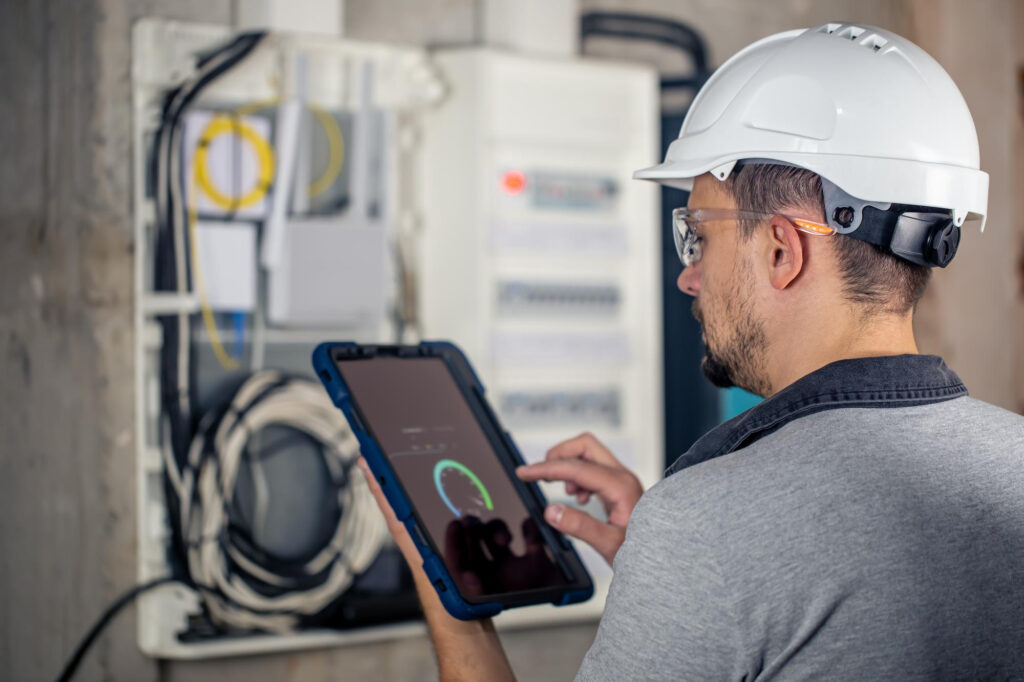
By leveraging IoT technology, utilities can optimize their operations, enhance customer service, and achieve sustainability goals. From smart meters that provide detailed energy consumption data to sensors that monitor the health of infrastructure, IoT is at the heart of the digital transformation in the utility industry. An IoT solution can significantly enhance automation and control, optimizing operations within the energy and oil sectors.
Digitizing Utilities: The Rapid Rise of IoT-Enabled Infrastructure
Connected devices are moving utilities beyond old-school meters and analog processes. Intelligent IoT systems proactively identify potential issues, enabling operators to implement preventative measures before actual damage occurs. Digital sensors are being deployed to monitor logistics and improve grid reliability. Gas IoT solutions are implemented to enhance digital monitoring and maintenance within the gas industry. Everything from advanced metering infrastructure (AMI) to distribution network sensors is deployed at scale. IoT technology helps in optimizing energy consumption and production, making it possible for utilities to manage resources more efficiently with advanced IoT solutions. In fact, global spending onIoT in utilities (hardware, software, and services) reached an estimated $49 billion in 2023, with projections indicating it could top $150 billion by 2032 (roughly 13–14% annual growth). For many utilities, this level of investment represents a shift from pilots to full-fledged rollouts, as technology costs drop and success stories accumulate.
Electricity leads the way in IoT adoption. In North America alone, over 70% of electric meters are now smart, enabling near real-time usage data and faster outage detection. Water utilities still lag slightly, only about 20–25% of global water customers currently have a smart meter. Yet, that number is expected to surge, driven by non-revenue water challenges and aging infrastructure.
Market Trends in the Oil and Gas Industry: Driving Forces and Strategic Investments
Several macro-level factors explain why digitization is moving from “nice-to-have” to “must-have” for many utilities:
Aging Infrastructure: Some water mains and power lines are literally over a century old, leading to frequent breaks or inefficiencies. Digitization offers a data-rich approach to prioritize maintenance and replace the worst-off assets first.
Sustainability & Climate Goals: With climate change intensifying storms, droughts, and wildfires, many utilities face pressure to improve resilience and reduce losses. Automated processes enhance efficiency and safety within the oil and gas industry through IoT technology. Sensor networks and AI-driven analytics can detect leaks, predict outages, and integrate distributed energy resources (like solar or battery storage) more effectively, significantly increasing productivity.
Customer Expectations: Today’s consumers want more control over their usage and billing. Smart meters let customers track consumption daily or hourly, potentially alerting them to leaks or letting them shift usage to lower-cost times.
Regulatory Support: Some regions have mandated advanced metering, offering partial funding or cost-recovery mechanisms that reduce financial risk. In the U.S., recent infrastructure bills include tens of billions earmarked for grid modernization, while the EU is encouraging widespread installation of smart meters under its energy directives.
Gas companies are leveraging digital solutions to optimize operations and enhance maintenance. Modern cloud services and network connectivity are essential for enhancing operational efficiency in oil and gas applications.
Benefits of IoT in Utilities
The integration of IoT in utilities offers a multitude of benefits that drive efficiency and customer satisfaction:
Improved Operational Efficiency: IoT devices and sensors provide real-time monitoring and control of energy distribution systems, leading to reduced energy consumption and enhanced overall efficiency. Analytics tools aid in meeting regulatory compliance and informed decision-making.
Predictive Maintenance: With IoT sensors and advanced data collection, utilities can perform predictive maintenance, minimizing downtime and improving the reliability of energy infrastructure.
Enhanced Customer Experience: IoT-enabled smart meters and energy management systems offer customers real-time insights into their energy consumption, allowing them to make informed decisions and manage their usage more effectively.
Increased Safety: IoT sensors can detect potential safety hazards, such as gas leaks or electrical faults, enabling prompt action to prevent accidents and ensure safety.
Cost Savings: IoT-enabled energy management systems help reduce energy consumption, leading to lower energy bills for customers and cost savings for utilities.
IoT solutions are also being used to monitor and control equipment, predict maintenance needs, and optimize energy consumption. This not only improves the reliability of energy infrastructure but also supports sustainability efforts by reducing waste and optimizing resource use. As the oil and gas industry continues to embrace digital systems, the benefits of IoT technologies are becoming increasingly apparent, driving a new era of innovation and efficiency.
Applications of IoT in the Gas Industry
IoT has numerous applications in the gas industry, revolutionizing the way gas companies operate. One of the most significant applications is predictive maintenance. By using IoT sensors to collect data on equipment status and flow rates, gas companies can predict when maintenance is needed, reducing downtime and maintenance costs.
Remote monitoring is another critical application. IoT solutions enable gas companies to monitor their infrastructure in real-time, detecting potential issues before they become major problems. This capability is particularly valuable in ensuring safety, as it allows for the immediate detection of hazards such as gas leaks.
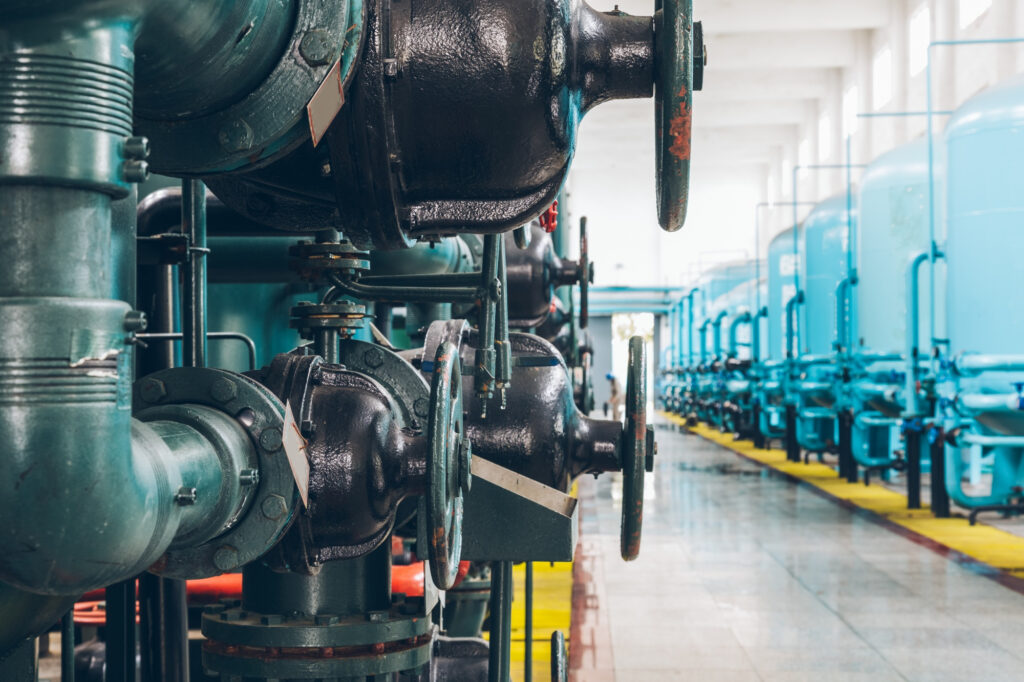
Gas IoT solutions also play a crucial role in optimizing resource usage and reducing energy consumption. By providing detailed insights into operational efficiency, these solutions help gas companies make data-driven decisions that enhance productivity and reduce waste. The ability to collect and analyze data in real-time allows for more efficient management of resources, ultimately leading to cost savings and improved operational performance.
Data Analytics in the Energy Sector
Enabling companies to transform digital systems and make data-driven decisions. Data scientists and experts use advanced data acquisition and analytics tools to analyze sensor data, providing practical insights into equipment failure, maintenance costs, and energy consumption.
In the energy sector, data analytics helps improve operational efficiency by identifying patterns and trends that can inform decision-making. For example, by analyzing sensor data, companies can predict equipment failures before they occur, reducing downtime and maintenance costs. This proactive approach not only enhances reliability but also extends the lifespan of critical infrastructure.
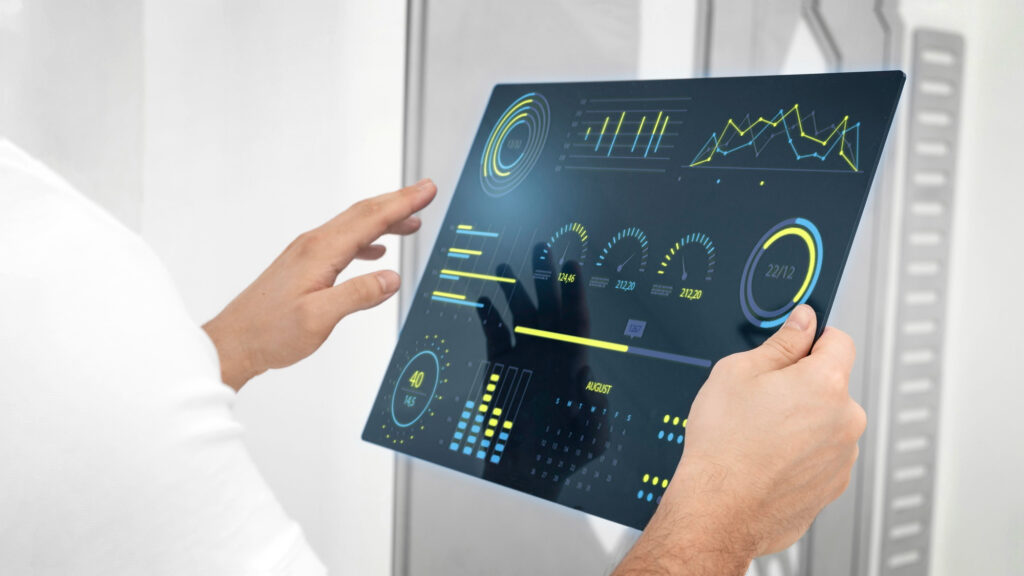
Electric utilities and energy suppliers can leverage data analytics to optimize their operations, predict energy demand, and improve grid reliability. By using analytics tools to monitor and manage energy consumption, these companies can reduce costs and enhance overall efficiency. The integration of data analytics into digital systems is transforming the energy sector, providing valuable insights that drive innovation and improve utility data management.
Interesting Figures & Standout Statistics
1.06 billion: The estimated number of smart electricity meters globally at the end of 2023. This could reach 1.75 billion by 2030, signaling a steady expansion of IoT endpoints in the energy sector.
The integration of mobile devices with IoT networks allows technicians to access complex information for faster decision-making on-site.
6% CAGR: Projected growth rate for worldwide smart meter deployments (electric, water, and gas) through 2030.
30–40%: Typical reduction in operating costs utilities can see when scaling IoT solutions for predictive maintenance, according to some pilot studies.
$18 million: Annual savings one major U.S. utility reported after fully rolling out 850,000+ smart meters—achieved through fewer truck rolls, lower meter-reading expenses, and improved outage response.
1.2 million: Number of smart water meters deployed by Thames Water in London as of 2024, a program aiming to detect leaks earlier and reduce water waste through remote monitoring.
Closing the Gaps: Overcoming Hard-to-Reach Meters with IoT Devices
For many utilities, these pockets mean they’re missing crucial data and insight. At Waltero, we’ve tackled this challenge by developing W-sensors—generic visual sensors that can capture meter readings from legacy devices without a full swap-out. Our W-sensors are designed to operate under extreme temperatures, ensuring reliable performance in harsh environments. Instead of scrapping perfectly functional meters, our solution allows you to retrofit them quickly, pulling near real-time or scheduled visual data and converting it into digital metrics. This approach ensures you don’t lose sight of that 5–15% segment and can maintain a consistent, fleet-wide view of your entire infrastructure.
Even for early adopters among utilities, we often see 5–15% of meters that are particularly hard to replace with smart devices. These could be:
Meters in Difficult Spots: In some cases, meters are located behind walls, in basement vaults, or under busy streets. Exchanging them might require expensive excavation or significant construction that disrupts the surrounding neighborhood. A water utility in a major city, for example, found that upgrading just a few hundred underground meters could cost millions due to street closures, contractor fees, and extended timelines. In the end, this means that many meters end up not getting digitized, leaving big gaps in the data.
Meters with Prohibitively Expensive Replacements: Certain high-capacity meters—often main meters or ones handling large volumes—are essential for critical infrastructure. Replacing them with new smart models can cost tens of thousands of dollars each if specialized engineering is needed. Sometimes, the existing meter is still reliable and calibrated, so discarding it prematurely means a hefty financial hit that’s tough to justify without a guaranteed return.
Still, utilities opt to use Waltero’s retrofit solutions across their entire meter population, leveraging the speed of deployment and trust they already have in their existing meters. It’s a cost-efficient, lower-disruption path to digitization for those who want broad coverage without a lengthy procurement or installation process for brand-new wireless smart metering technology.
Waltero’s Perspective: Why Every Meter Counts
At Waltero, we believe full visibility is key to unlocking the real potential of utility digitization. It’s not enough to have state-of-the-art equipment on most of your network if 5–15% remains invisible. Our W-sensors and retrofit approach are designed to tackle those last stubborn segments, ensuring that:
No sensor data goes overlooked, leading to proactive maintenance and consistent service levels.
Upgrade cycles are manageable—utilities can phase in changes without scrapping meters that still have years of service life left.
Fast rollout—with minimal disruption to daily operations, especially in remote or hard-to-reach sites.
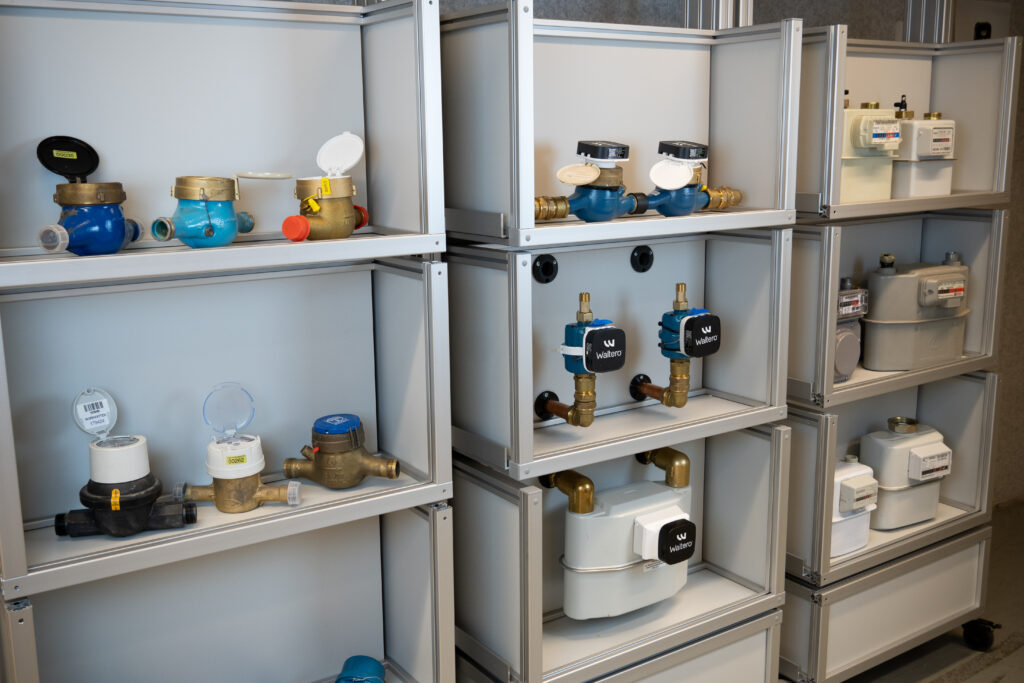
Ultimately, digitization isn’t about flashy technology in only the easiest areas. It’s about ensuring every single meter and pipeline is brought online, whether through new AMI or retrofit sensors. This holistic approach pays dividends in operational efficiency, sustainability, and customer satisfaction.
Interested in exploring how our W-sensors work? Reach out or check our Exploratory Kit to see how we tailor solutions uniquely for your business.
Challenges and Limitations of IoT in Utilities
While IoT brings numerous advantages to the utility sector, it also presents several challenges and limitations that need to be addressed:
Interoperability: The lack of standardization in IoT devices and sensors can create integration challenges with existing BI or SCADA systems. Achieving seamless interoperability is essential for maximizing the benefits of IoT.
Scalability: Deploying a large number of IoT devices and sensors across a wide geographic area can be challenging. Utilities need scalable IoT solutions that can grow with their needs.
Cost: Implementing IoT solutions can be expensive, particularly for small and medium-sized utilities. Balancing the initial investment with long-term benefits is a key consideration. Implementing IoT solutions is essential for modern businesses to thrive amidst evolving energy sector demands and to save natural resources. IoT systems utilize advanced sensors to monitor and improve water quality, enabling real-time data collection and risk mitigation related to water pollution.
Data Security: The proliferation of IoT devices and sensors raises concerns about data security and the potential threats. Ensuring robust security measures is crucial to protect sensitive data.
Waltero addresses all of these challenges and can seamlessly act as a factor solution within an existing metering infrastructure. The W-Sensors are Edge AI camera sensors with a neural network onboard. This means that the devices themselves interpret the images into data, meaning the solution scales easily, without reliance on ever-growing cloud infrastructure.
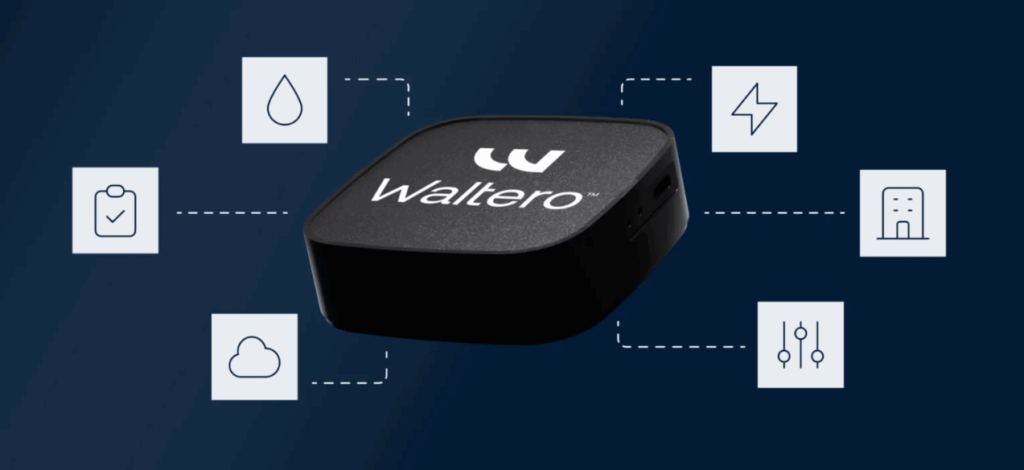
The cost is low, especially considering the fast and easy deployment. Open standards of communication, combined with strong end-to-end encryption, ensure interoperability with existing IT systems and a high level of data security.
Looking Ahead: The Future of Remote Monitoring
As we move further into the 2020s, digitization will continue reshaping water and energy utilities worldwide. With climate challenges intensifying and consumer demands rising, connected infrastructure and data-driven decision-making aren’t luxuries—they’re essential tools for staying resilient, profitable, and compliant. Meanwhile, 5G and satellite IoT are expanding connectivity options, enabling utilities to gather near-real-time data from even the most isolated sites.
IoT technology enhances the efficiency and automation of wind farms, allowing for better monitoring and regulation of turbine operations.
Digitization is here to stay, utilities that act now, focusing on flexible, secure, and value-driven deployments, will be the ones that thrive in a rapidly evolving market. At Waltero, we stand ready to help you bridge the final gaps, so every meter and sensor, old or new, contributes to your broader digital strategy.
Conclusion
Digitizing your utility operations can feel daunting, particularly when 5–15% of your network is stuck in legacy mode. The oil and gas industry is also leveraging digitization to improve operational efficiency and safety, particularly in the monitoring of natural gas. But a combined approach—mixing state-of-the-art AMI systems with effective retrofit solutions—can help you capture data across your entire footprint. At Waltero, we remain convinced that the future belongs to those who see beyond partial coverage and tackle even the hardest corners of their infrastructure. The returns speak for themselves, both in cost savings and improved reliability, once your entire network is online.
%3Aformat(webp)&w=3840&q=75)



